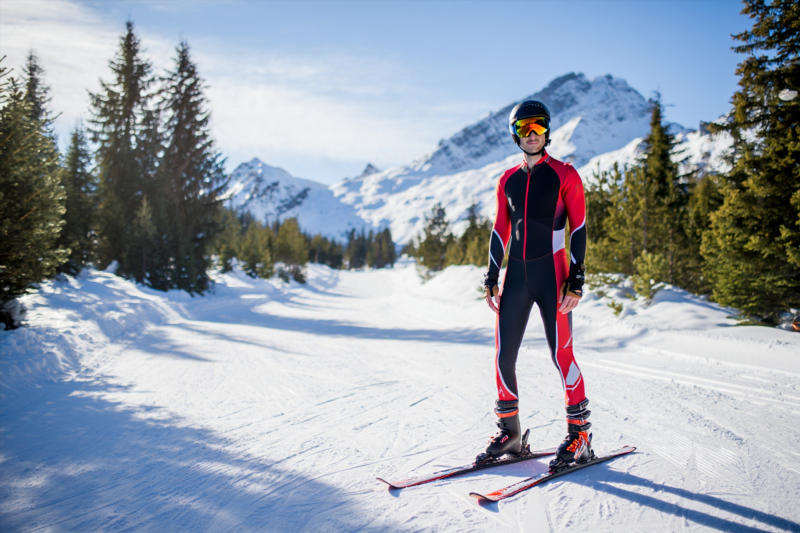Transitioning from recreational to competitive skiing is an exhilarating journey that demands dedication, strategic planning, and a passion for the sport. Whether you’re aiming to compete at local races or reach national levels, understanding the fundamental steps and effective strategies will ensure a seamless and confident transition. Our platform offers expert guidance, training programs, race insights, and gear recommendations tailored for every skier aspiring to conquer new heights on snow-covered trails.
Understanding the Difference: Recreational vs. Competitive Skiing
Before diving into your transition, it’s crucial to recognize the distinctions:
| Recreational Skiing | Competitive Skiing |
| Focus on enjoyment and exploration | Focus on performance and results |
| Flexible techniques | Precise, optimized techniques |
| Casual training | Structured, intensive training |
| Less emphasis on equipment | Specialized gear and tuning |
| Open to all skill levels | Requires adherence to competition standards |
Knowing these differences helps tailor your approach and sets realistic expectations for your progression.
Step-by-Step Guide to Transitioning Successfully
1. Set Clear Goals and Develop a Training Plan
Why it matters: Goal-setting fuels motivation and provides direction. Whether you aim to participate in local races or qualify nationally, define specific objectives.
How to proceed:
- Identify your target competitions
- Create a timeline with milestones
- Incorporate progressive training exercises focusing on endurance, speed, and technique
*Tip:* Use a training journal to track progress, setbacks, and adjustments.
2. Invest in Proper Equipment and Gear
Importance: Quality gear enhances performance and reduces injury risk.
Recommendations:
- Ski poles and boots suited for competition
- Skis optimized for your style and race type
- Wearable tech (e.g., heart rate monitors, GPS) for tracking data
- Competition-specific apparel for agility and comfort
*Expert insight:* Consult with a gear specialist to find equipment tailored to your weight, skill level, and race conditions.
3. Improve Technique with Expert Guidance
Why it’s essential: Technical proficiency is the foundation of competitive success.
Strategies:
- Enroll in coaching sessions focusing on race techniques
- Study professional skiers’ form and strategies
- Perform drills that target balance, efficiency, and power transfer
Recommended drills:
- Glide and push drills
- Cornering exercises
- Speed intervals
*Impact:* Enhanced technique conserves energy and increases race performance.
4. Focus on Structured and Consistent Training
Key points:
- Incorporate interval training for stamina
- Include strength training, especially for core and leg muscles
- Practice on varied terrain to mimic race conditions
- Schedule regular rest and recovery periods
*Psychological tip:* Maintaining discipline and consistency builds mental resilience, essential for competitive scenarios.
5. Gain Race Experience and Learn Course Strategies
Why it matters: Familiarity with race courses boosts confidence and performance.
Actions:
- Participate in local races
- Review course maps and terrain profiles
- Practice pacing strategies
- Analyze race footage to identify strengths and areas for improvement
Overcoming Common Challenges in Transition
| Challenge | Solution |
| Technical skill gaps | Invest in coaching and focused drills |
| Equipment costs | Prioritize essential gear upgrades, seek sponsorship, or rental options |
| Balancing training with other commitments | Develop a flexible yet disciplined training schedule |
| Mental pressure | Use visualization, mindfulness, and mental toughness exercises |
Your Roadmap to Skiing Success
Achieving an effective transition from recreational to competitive skiing is a blend of strategic planning, technical mastery, and unwavering commitment. By setting clear goals, investing in the right gear, and embracing disciplined training, you’ll build confidence and elevate your performance on snow trails.
Essential Checklist:
- Define your competitive goals
- Develop a personalized training program
- Upgrade to competition-grade equipment
- Seek professional coaching
- Gain experience through races
- Monitor progress and adapt strategies
Frequently Asked Questions
How long does it typically take to transition to competitive skiing?
Answer: The timeline varies based on your current skill level, training consistency, and goals. On average, dedicated skiers may take 1-3 years to reach a competitive standard.
Do I need to be an expert skier to start competing?
Answer: Not necessarily. You should have solid recreational skills and a willingness to learn and adapt. Starting in beginner or local races is common for newcomers.
What gear is essential for serious competition?
Answer: Essential gear includes race skis, poles, boots, racing suits, and protective accessories like helmets and goggles. Investing in specialized equipment can significantly improve performance.
Transitioning from recreational to competitive skiing is an achievable and rewarding journey. With the right strategies—goal setting, technical training, equipment investment, and race experience—you can confidently elevate your skiing abilities. Our platform is dedicated to guiding you every step of the way, providing expert insights, customized training programs, and gear recommendations for every level. Embrace the challenge, and unlock your full potential on snow trails!
Ready to start? Browse our comprehensive training modules or contact our coaching team today to embark on your competitive skiing adventure.
